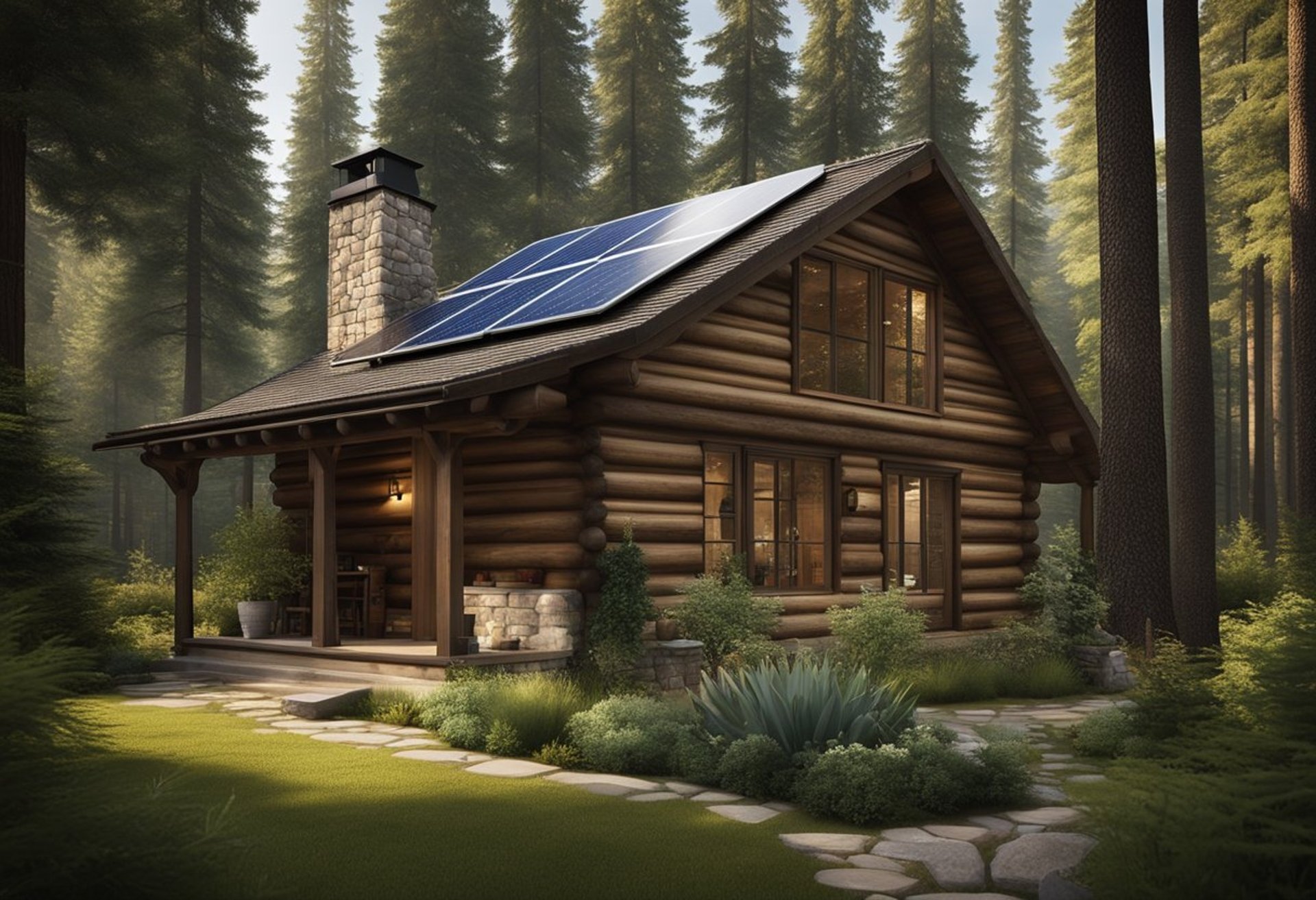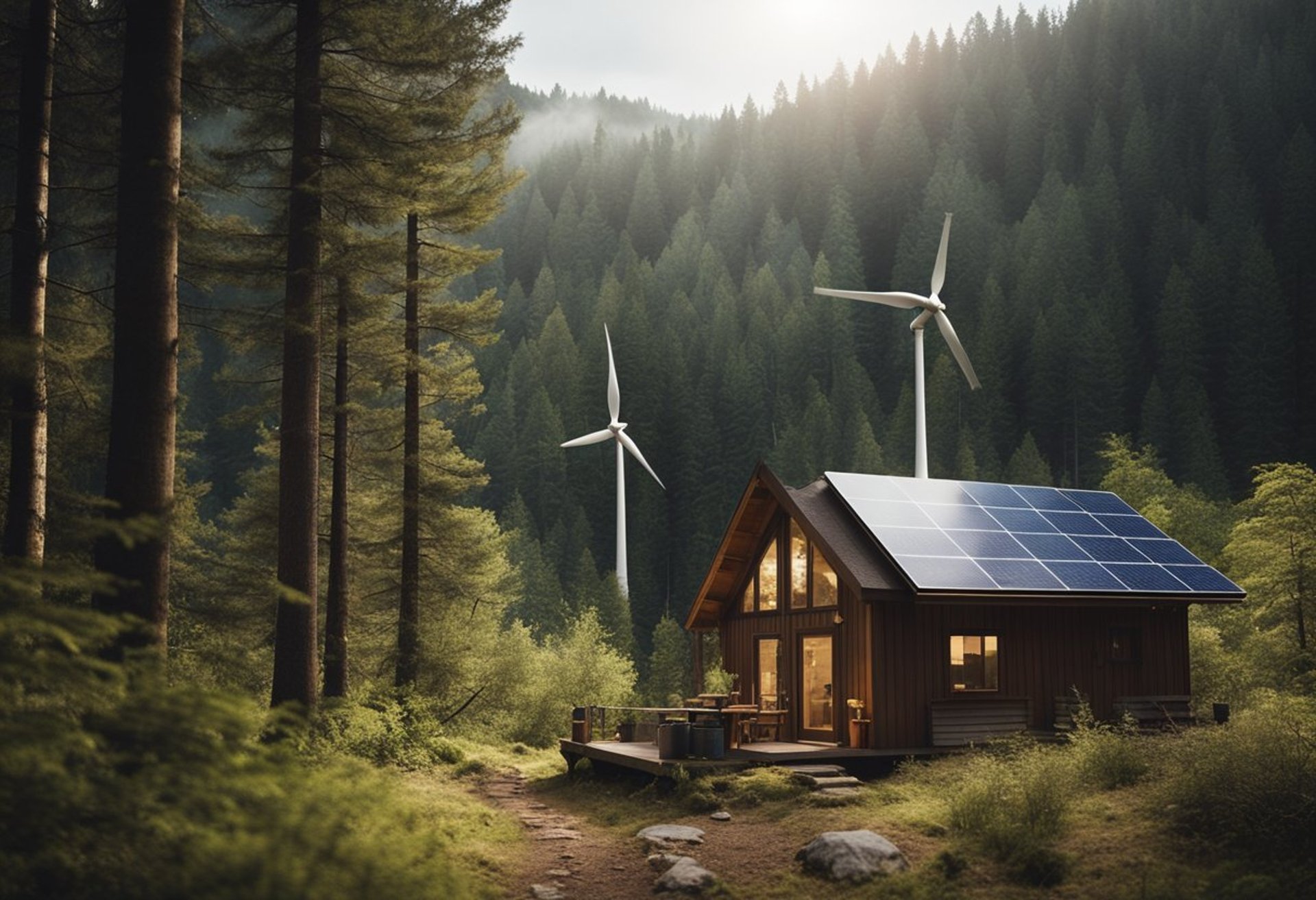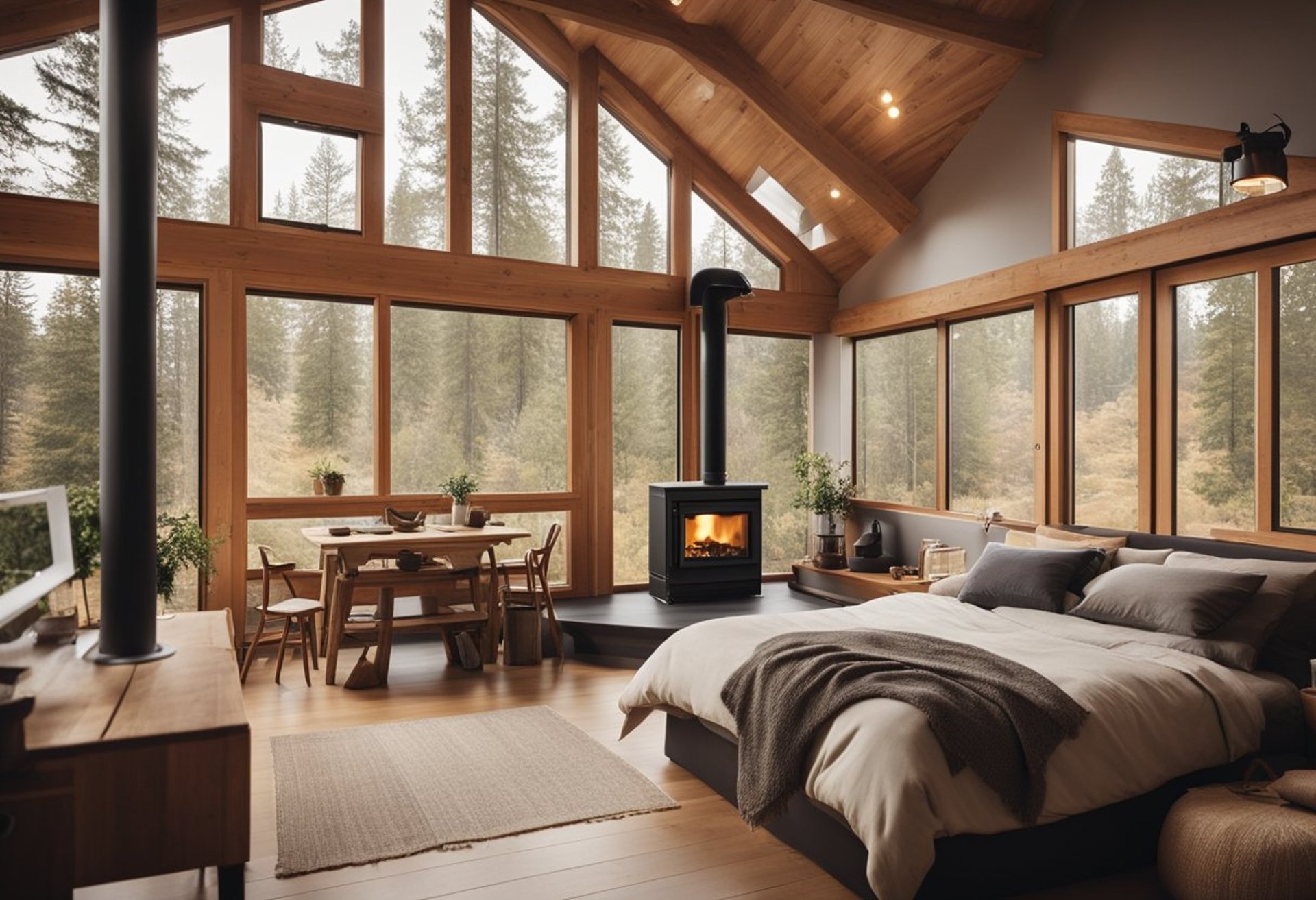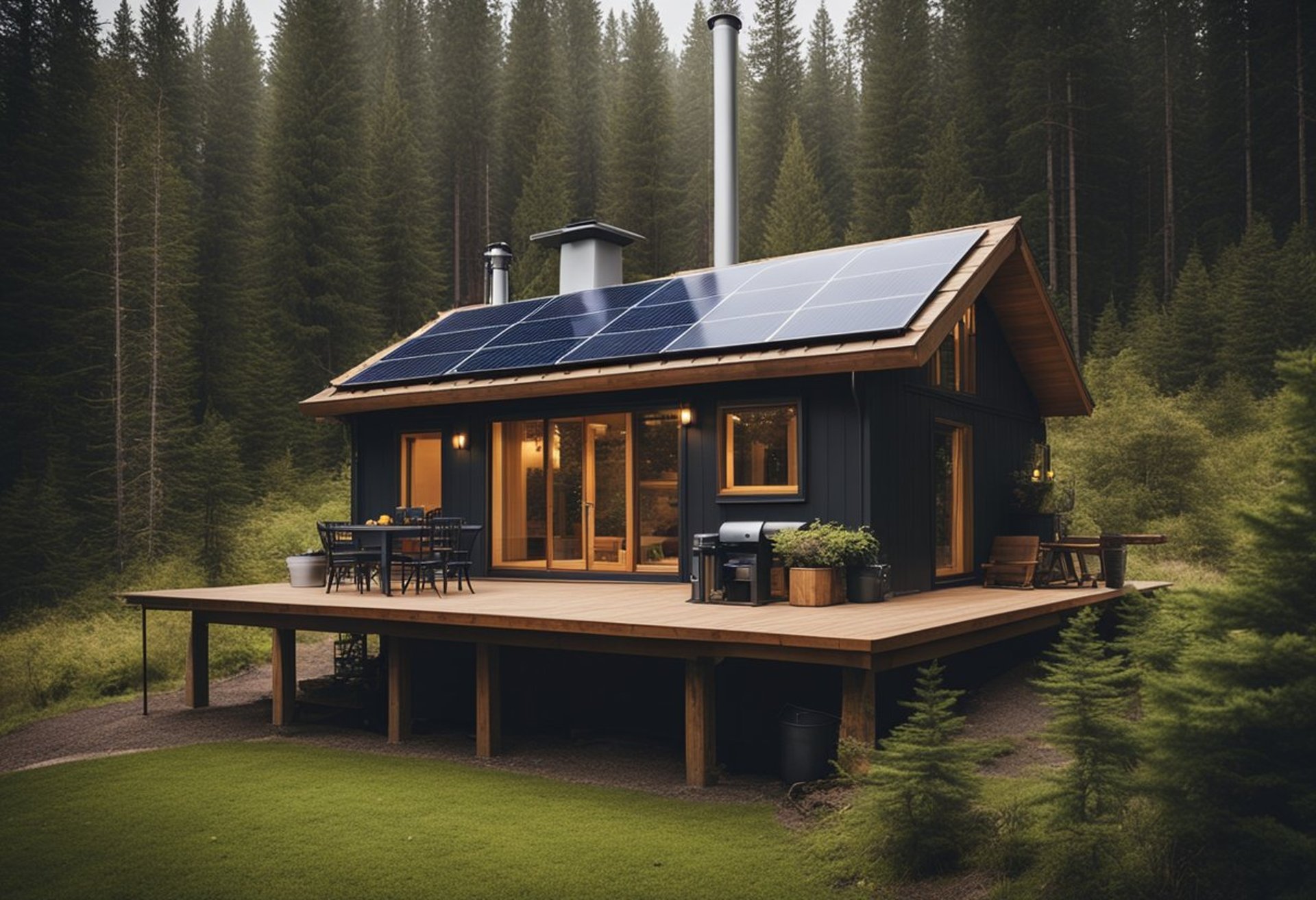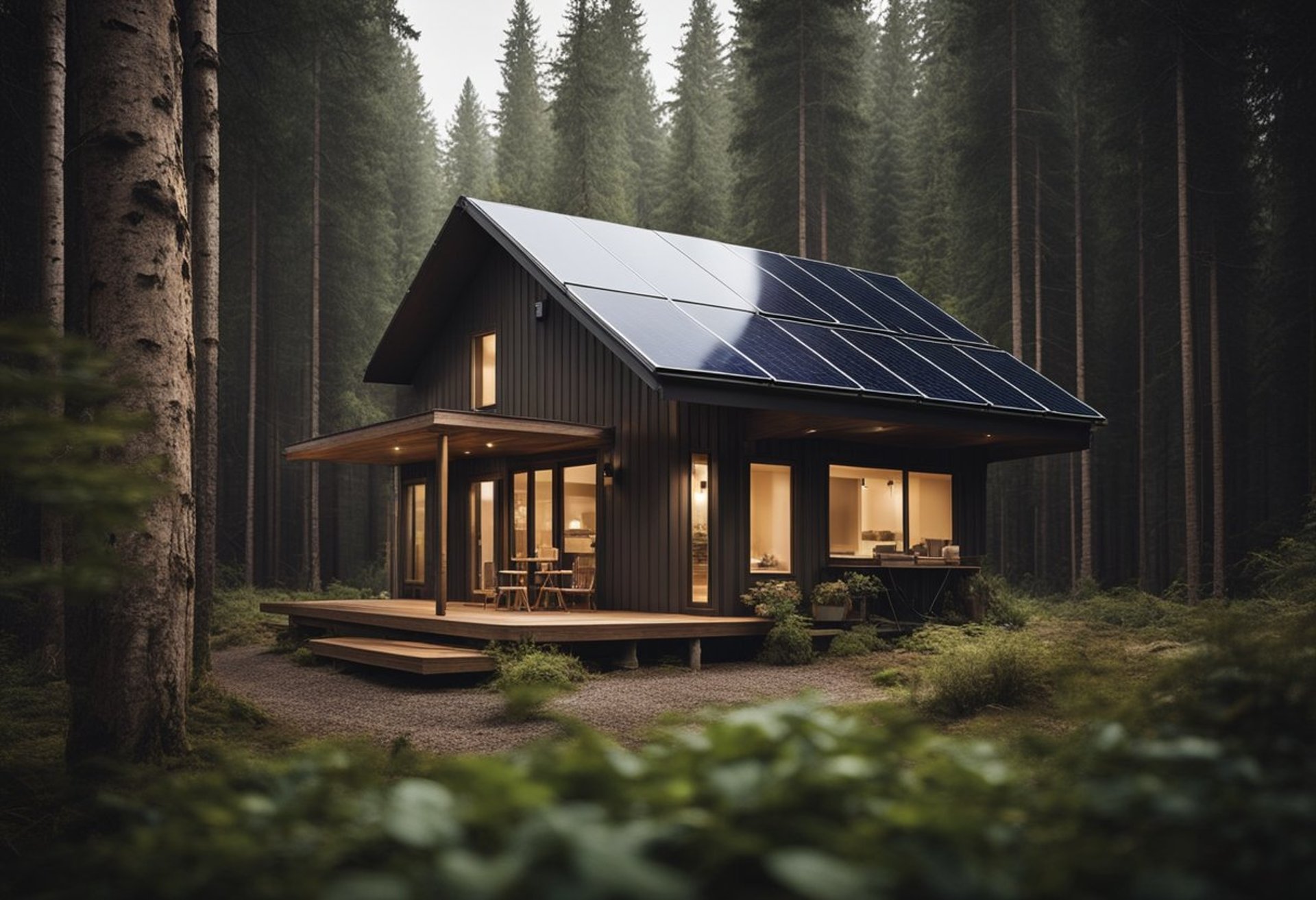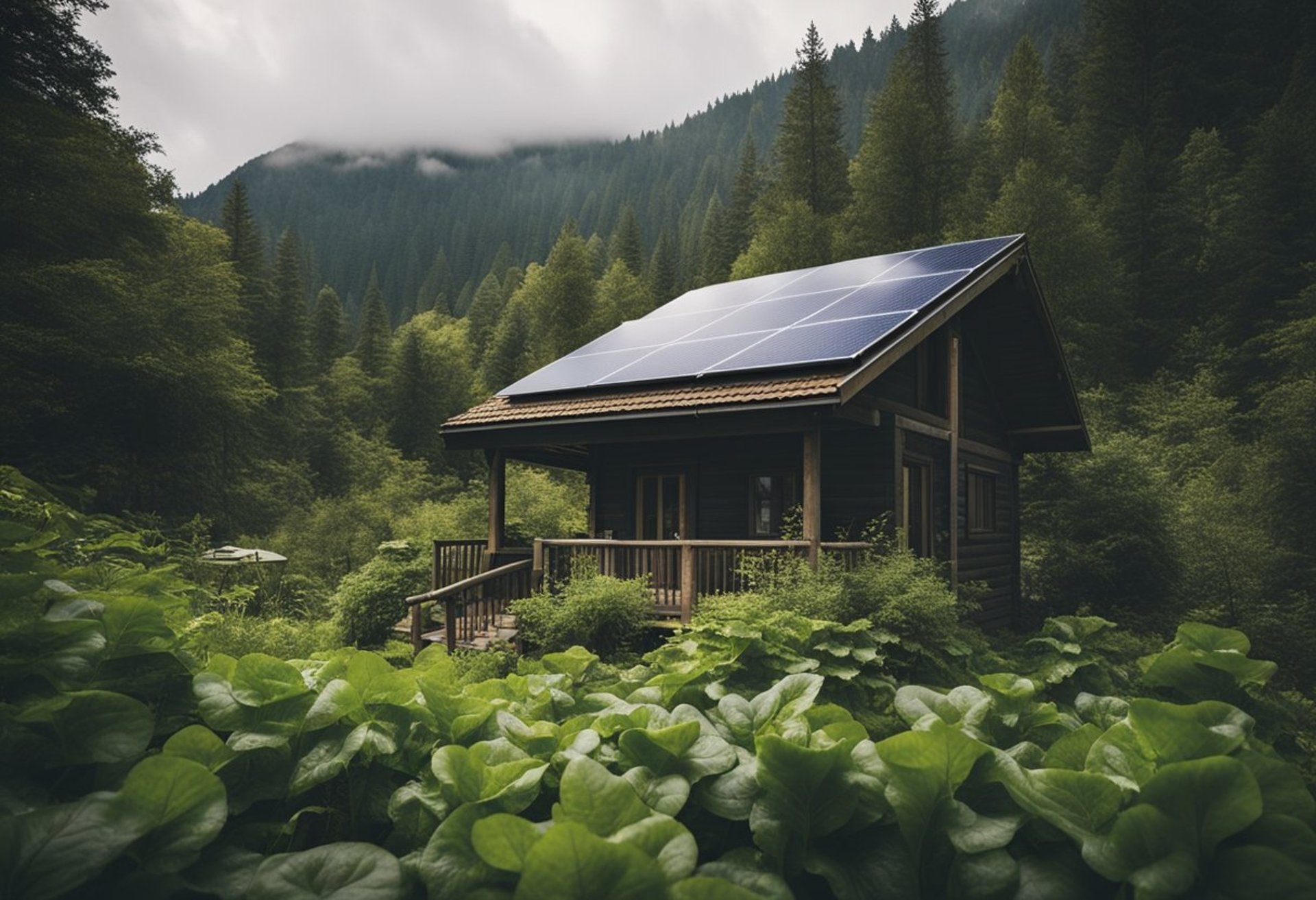Off the Grid Design: Creating Sustainable and Self-Sufficient Living Spaces
Off the grid design represents a growing desire for independence, sustainability, and a lifestyle free from urban constraints. This approach emphasizes self-sufficiency through careful planning, innovative construction, and the integration of natural resources. By exploring the key principles and practices of off the grid design, individuals can create spaces that not only reflect their values but also optimize their interaction with the environment.
Off the Grid Design: Creating Sustainable and Self-Sufficient Living Spaces
Off the grid design represents a growing desire for independence, sustainability, and a lifestyle free from urban constraints. This approach emphasizes self-sufficiency through careful planning, innovative construction, and the integration of natural resources. By exploring the key principles and practices of off the grid design, individuals can create spaces that not only reflect their values but also optimize their interaction with the environment.
In an era where environmental concerns dominate, off the grid living provides a practical solution for those seeking a more harmonious relationship with nature. From choosing the right location to implementing sustainable utility systems, each aspect plays a crucial role in achieving a successful off the grid lifestyle. Readers will discover essential strategies for building their own cabin, designing efficient interiors, and navigating the legal landscape involved in such ventures.
Through understanding these elements, anyone can embark on the journey of creating an off the grid dwelling that meets their needs while minimizing their carbon footprint.
Key Takeaways
Off the grid design prioritizes self-sufficiency and sustainability.
Planning involves careful consideration of location, utilities, and layout.
Legal and zoning considerations are essential for successful implementation.
Principles of Off the Grid Design
Off the grid design emphasizes sustainability and self-sufficiency while promoting a harmonious relationship with the environment. Key elements incorporate energy efficiency, natural materials, and innovative techniques, ensuring functional living spaces that minimize ecological impact.
Sustainability and Self-Sufficiency
A core principle of off the grid design is sustainability. This involves using renewable energy sources such as solar panels, wind turbines, or micro-hydro systems. These options provide electricity without relying on conventional utilities.
Water conservation is another critical aspect. Rainwater harvesting systems and composting toilets reduce dependence on municipal water.
The structure itself plays a role. Many opt for natural materials like timber and stone, enhancing durability and insulation. Energy-efficient appliances and passive solar design further promote self-sufficiency, ensuring the cabin remains functional year-round.
Integration with the Environment
Integration with the environment is crucial in off the grid design. This approach begins with site selection, where builders assess sunlight, wind patterns, and local ecology to determine the optimal location for a cabin.
The exterior often features natural finishes, such as wood or stone, which help the cabin blend into its surroundings. Roof designs might include green roofs or living walls, providing insulation and supporting local wildlife.
Landscaping techniques also prioritize native plants that require minimal water and maintenance. Thoughtful design creates a seamless connection between the structure and its natural setting, enhancing visual appeal and ecological integrity.
Planning and Building Your Off the Grid Cabin
Constructing an off-the-grid cabin involves careful planning to ensure sustainability and comfort. Key factors include choosing the right site, selecting durable materials, and implementing renewable energy systems effectively.
Site Selection and Land Preparation
Choosing the right location is crucial for an off-the-grid cabin. It should provide access to natural resources like water and sunlight.
Considerations for site selection include:
Proximity to Water Sources: Ideally, a nearby stream or lake supports water needs.
Sun Exposure: Maximizing sunlight helps with solar energy generation.
Topography: Flat or gently sloping land simplifies construction and drainage.
Land preparation is equally important. Clearing the site of debris while preserving vegetation can enhance drainage and reduce erosion.
Additional factors to assess include local zoning laws and environmental regulations. This ensures compliance and facilitates a smooth building process.
Material Selection and Construction Techniques
Choosing sustainable materials impacts both environmental footprint and longevity. Commonly used materials for off-the-grid cabins include:
Reclaimed Wood: Utilizes existing resources, decreasing deforestation.
Straw Bale: Offers excellent insulation and is cost-effective.
Earthbags: Provide high thermal mass and use natural materials.
Preferred construction techniques often focus on energy efficiency. Passive solar design harnesses sunlight for heating, while proper insulation reduces energy demands.
Rainwater collection systems can be integrated into the design, facilitating self-sufficient water use. Additionally, designs that include large windows encourage natural light while enhancing aesthetics.
Renewable Energy Sources and Storage
Implementing renewable energy is vital for off-the-grid living. Common energy sources include:
Solar Panels: An essential component, they harness sunlight to generate electricity.
Wind Turbines: In windy areas, small-scale turbines can supplement power needs.
Micro-hydro Power Systems: These systems are ideal near flowing water, providing a reliable energy source.
Energy storage solutions, such as batteries, are critical. Proper sizing ensures that energy production matches consumption.
Consider integrating backup systems for reliability. A hybrid approach, combining solar and wind energy, often provides the best results, especially in varying weather conditions.
Utilizing these strategies can create a self-sufficient and sustainable off-the-grid cabin.
Cabin Design Essentials
Successful cabin design for off-the-grid living revolves around two critical aspects: harnessing natural light and efficiently utilizing space. These principles not only enhance comfort but also promote sustainability.
Maximizing Natural Light and Insulation
Strategic placement of windows is vital in any cabin design. Large windows or glass doors facing the sun can help maximize natural light, reducing reliance on artificial lighting. Skylights are another effective option, allowing light to flood in from above without sacrificing wall space.
Insulation plays a key role in energy efficiency. Using materials like cellulose, spray foam, or sheep's wool can keep cabins warm in winter and cool in summer. Proper insulation minimizes energy loss, ensuring the cabin remains comfortable year-round.
Additionally, using reflective surfaces in the interior can augment natural light distribution. Light-colored walls and ceilings help bounce sunlight throughout the space, enhancing brightness without the added cost of electricity.
Efficient Space Utilization
In off-the-grid cabins, every square foot counts. Open floor plans often work best, allowing for flexible layouts. This encourages multifaceted use of spaces; for instance, a living area can also serve as a dining space.
Built-in furniture can significantly enhance functionality. Murphy beds, foldable tables, and storage benches not only save space but also reduce clutter.
The use of vertical space is essential. Shelves can be installed high on walls to take advantage of high ceilings, while hooks and pegboards help keep items organized without consuming floor space.
Incorporating multipurpose rooms further maximizes efficiency, allowing for diverse activities like sleeping, working, and relaxing in a single area. This approach reflects the minimalist ethos often embraced in off-the-grid living.
Interior Features and Layouts
Off-the-grid living requires thoughtful design that maximizes functionality and sustainability. Key features focus on efficient use of space with environmentally friendly materials and systems.
Cabin Kitchen Design
An off-the-grid cabin kitchen prioritizes efficiency while incorporating sustainable practices. Essential features often include:
Compact Appliances: Energy-efficient stoves and refrigerators designed for limited power.
Natural Materials: Use of stone and reclaimed wood for countertops and cabinetry, ensuring durability and aesthetic appeal.
Rainwater Harvesting Systems: Installation of systems that collect and utilize rainwater for cooking and cleaning.
Layouts often incorporate open spaces that maximize natural light, enhancing comfort and reducing energy reliance. Storage solutions like pull-out shelves and under-counter bins help maintain organization without clutter.
Cabin Bathroom Solutions
Bathroom designs for off-grid cabins focus on water conservation and eco-friendly solutions. Key elements include:
Composting Toilets: These systems reduce water usage and enhance sustainability.
Low-Flow Showers and Fixtures: Implementing fixtures designed to limit water consumption is crucial.
Natural Ventilation: Positioning windows and vents encourages airflow, reducing moisture build-up.
Each bathroom layout should also provide easy access to renewable resources, such as solar-heated water. Incorporating natural materials, like stone and wood, aligns with sustainable living while adding warmth.
Living Areas and Storage Solutions
Living areas in off-the-grid cabins center around flexibility and comfort. Important features include:
Multi-Functional Furniture: Items such as sofas that convert into beds or tables that collapse create dynamic space usage.
Built-In Storage: Consideration for under-floor storage or wall-mounted shelves helps maximize space while keeping living areas tidy.
Natural Lighting: Large windows and skylights reduce reliance on electricity and connect residents with their surroundings.
Layouts should facilitate ease of movement and interaction while providing a welcoming atmosphere. Sustainable materials, like bamboo for flooring, contribute to personal and environmental wellbeing.
Utility Systems for Off the Grid Living
Utility systems are essential for off the grid living, ensuring self-sufficiency in water, waste management, and climate control. This section covers key aspects of water collection, filtration, and waste management, as well as heating, cooling, and ventilation systems.
Water Collection, Filtration, and Waste Management
Water collection typically involves systems like rainwater harvesting and well drilling. Rainwater harvesting captures precipitation from roofs, directing it into storage tanks. This method can supply water for various household needs.
Filtration is crucial for ensuring water quality. Common methods include:
Activated Carbon Filters: Remove contaminants and improve taste.
UV Purification: Kills bacteria and viruses without chemicals.
Waste management in off-grid settings often utilizes composting toilets and greywater systems. Composting toilets reduce water usage and recycle waste into compost. Greywater systems reuse water from sinks and showers for irrigation or toilet flushing, conserving resources and minimizing environmental impact.
Heating, Cooling, and Ventilation Systems
Heating options for off-grid homes include wood stoves, propane heaters, or solar thermal systems. Wood stoves provide a sustainable heating source if timber is available, while propane heaters require regular fuel deliveries. Solar thermal systems use the sun to heat water, providing an eco-friendly option.
Cooling strategies often incorporate passive design principles. These can include:
Natural Ventilation: Maximizes airflow through strategic window placement.
Insulation: Keeps heat out in the summer and retains warmth in winter.
Ventilation is essential in maintaining air quality. Systems like exhaust fans and attic vents help prevent moisture buildup. Effective heating, cooling, and ventilation contribute significantly to comfort and energy efficiency in off-grid living.
Exterior Design and Landscaping
The exterior design of off-grid cabins emphasizes harmony with nature and self-sufficiency. Thoughtful landscaping and outdoor living areas enhance both functionality and aesthetics.
Outdoor Living Spaces
Creating outdoor living spaces maximizes enjoyment of nature. Common features include decks, patios, and fire pits. They enable relaxation and social gatherings while connecting occupants to their surroundings.
Materials such as reclaimed wood and natural stone are popular choices for structures. They blend with the landscape and offer durability. Including features like pergolas or shade trees can enhance comfort during warmer months.
Furniture selection should focus on weather-resistant materials. Portable options make it easy to rearrange or store items as needed. Incorporating outdoor kitchens allows for self-sufficient cooking, utilizing solar ovens or portable grills.
Gardening and Food Production
Gardening is essential for sustainability in off-grid living. Raised beds and container gardens optimize space and make maintenance easier. Native plants are recommended, as they require less water and care.
Vertical gardening techniques enhance food production in limited areas. Herbs, vegetables, and fruit trees can flourish in small spaces. Utilizing composting can enrich soil quality, supporting healthier plant growth.
Rainwater harvesting systems support irrigation needs without reliance on external sources. Proper designs ensure effective drainage and prevent erosion. Integrating permaculture principles further enhances ecological balance and food diversity.
Legal Considerations and Zoning Laws
When designing an off-the-grid space, understanding legal frameworks is essential. Compliance with building codes and zoning laws can influence design decisions significantly.
Building Codes and Off the Grid Compliance
Building codes ensure safety and structural integrity. They vary by location and may impose specific standards for materials and design. For off-the-grid designs, this can include requirements for:
Electrical systems: Adherence to wiring and safety codes.
Plumbing: Regulations regarding greywater systems and sanitation.
Insulation: Requirements for energy efficiency and weatherproofing.
It is crucial to consult local authorities or a building inspector to understand these requirements. Failure to comply can result in fines or the rejection of a project. It's advisable to incorporate eco-friendly materials and methods that meet code requirements to avoid complications.
Navigating Zoning Restrictions and Permitting
Zoning laws dictate how land can be used. They vary widely, affecting everything from land use categories to aesthetics. Common zoning restrictions include:
Setback requirements: Minimum distance structures must be from property lines.
Footprint limitations: Restrictions on the total building area permitted on a lot.
Usage limitations: Certain zones may restrict residential or recreational use.
Obtaining the necessary permits is vital before beginning construction. This process often involves filing plans and ensuring compliance with local regulations. Engaging with neighborhood associations or zoning boards early can clarify expectations and help negotiate any concerns. Understanding these regulations earlier can save time and resources throughout the building process.


